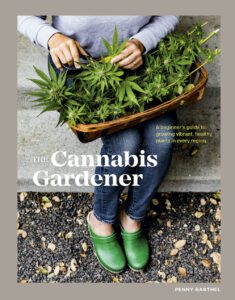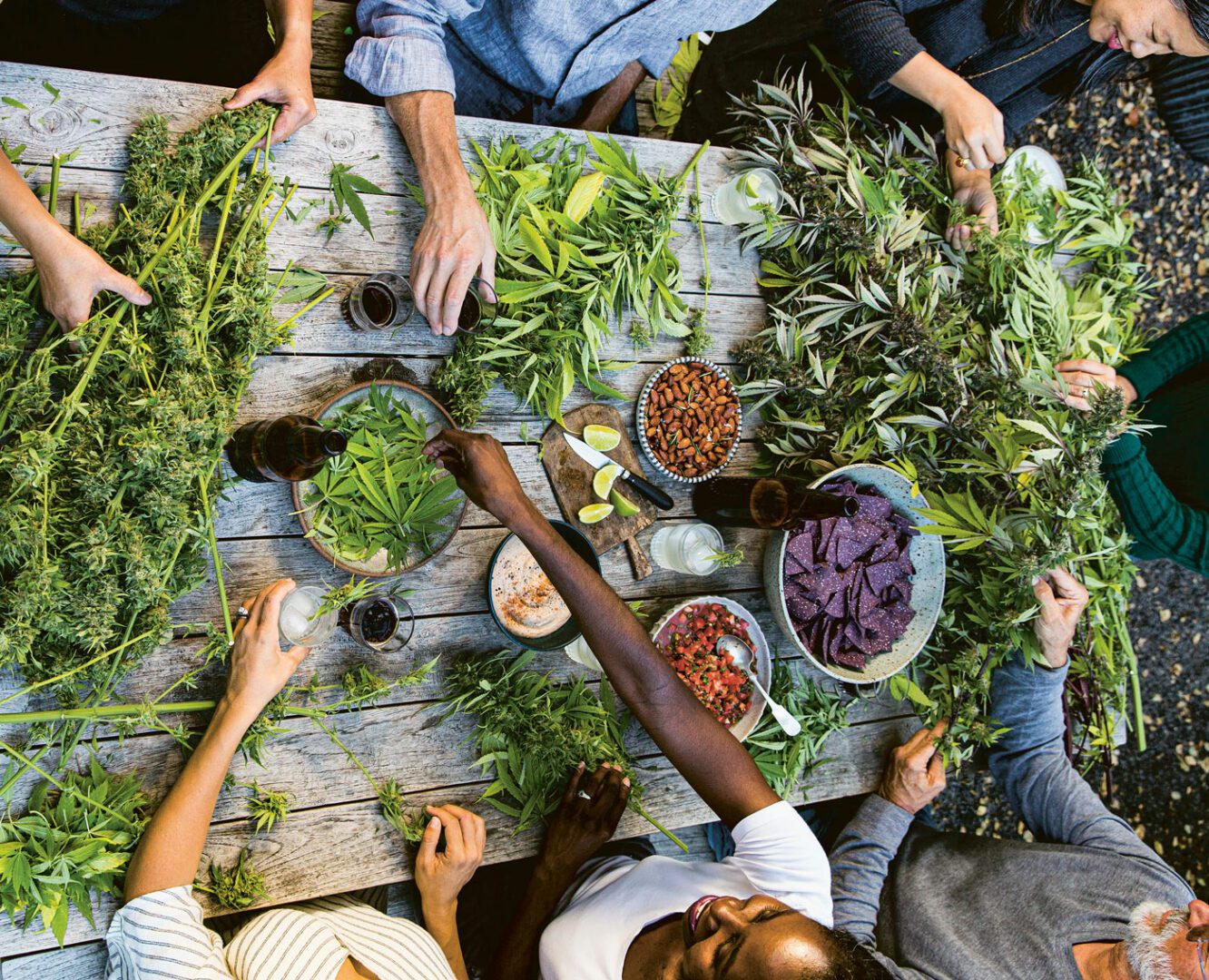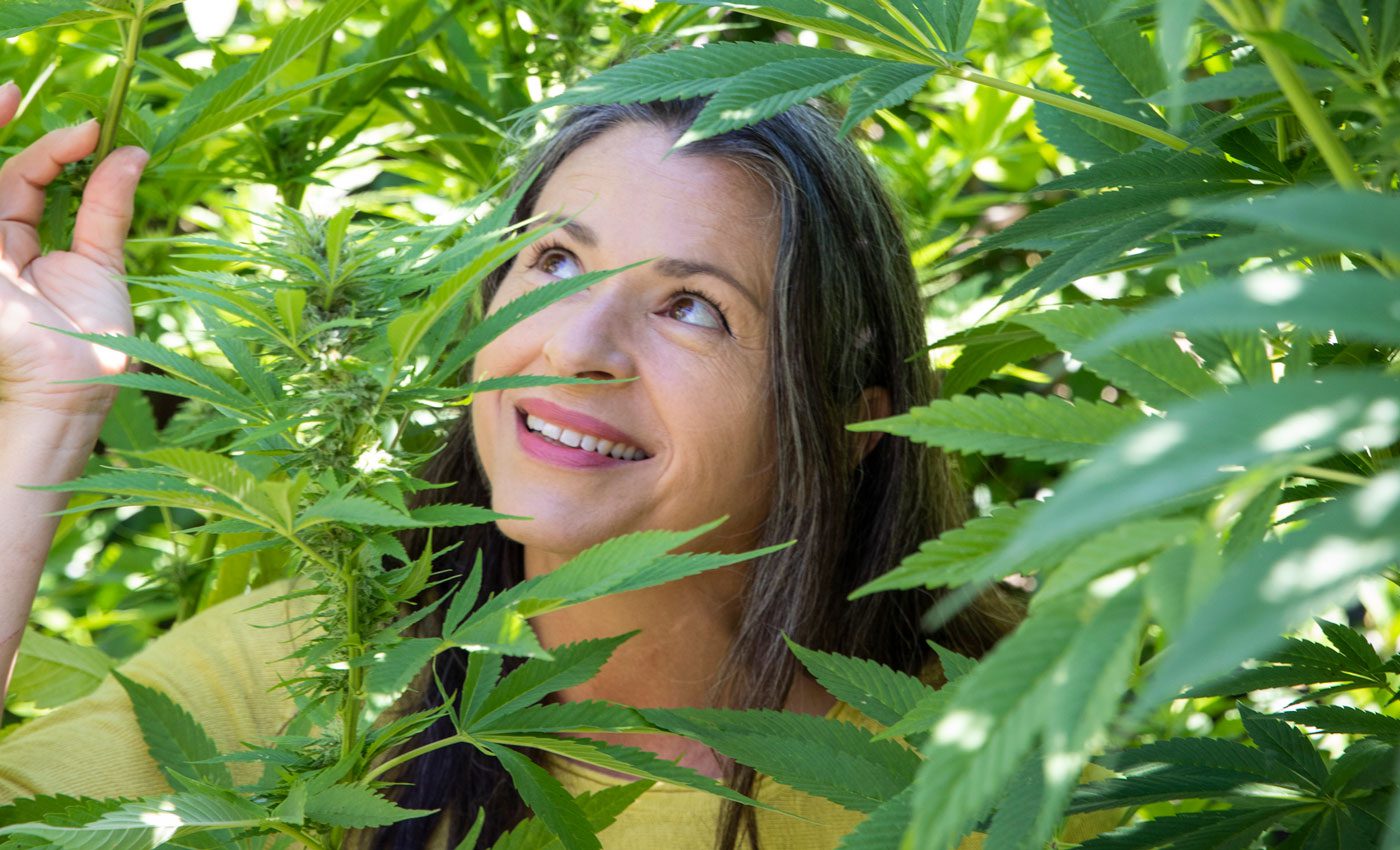In my role as a cannabis educator, I’m in contact with the creative, hard working folks in a number of roles in the cannabis industry. I know cannabis seed producers, growers, copy writers, refiners, marketers, researchers, lawyers, product inventors, budtenders, educators, accountants, bakers, scientists, and more. We are a hugely diverse group of people, yet have one thing in common: a plant. This plant offers us tremendous joy and healing, and I believe that it belongs in the garden. Of course I don’t mean that it belongs only in the garden. I offer here gentle encouragement to remember where the entire cannabis industry began — no matter how diverse and complicated it is today. Returning to the garden is a good thing, and will remind us of the reason we center our work around cannabis: health, wellness, and joy.
Step into a journey to cannabis cultivation mastery with our comprehensive guide, tailored for both novice enthusiasts exploring growing outdoor cannabis and seasoned cannabis greenhouse growers. Our expert insights and step-by-step cannabis grow guide cover essentials for successful outdoor cultivation, greenhouse setup, and optimal conditions, providing in-depth guidance on stages, troubleshooting, and harvesting. Whether scaling your cannabis cultivation operation or navigating legal compliance and effective marketing, our guide serves as a roadmap to success. Dive into confident cultivation, guided by our expertise for a flourishing garden.
Americans love gardening. While gardening has historically been the provenance of older folks, change is in the air. During the pandemic more young adults tried gardening, and they liked it. The survey demonstrated that most of the millions of new gardeners during the pandemic were millennials — there was a 65% increase in Millennial and a 44% increase in Gen Z gardeners. The number one self-reported reason why people increased their time in the garden was for improved mental health. That makes intuitive sense to me. Even though I’ve gardened for many decades, my little garden became even more precious to me as my life contracted during the pandemic.
 Americans also love cannabis. Put gardening and cannabis together and what emerges is a vital new sector of the cannabis industry: cannabis gardening. Let me take a minute to tease apart the differences between cannabis farming and cannabis gardening. The farmer’s prime objective is to produce a saleable crop and make a living. A gardener’s prime objective is to grow and enjoy a small number of cannabis plants for personal use. It’s good to ponder the differences between these two otherwise similar endeavors. In the years since I began growing cannabis in my garden, I’ve come to value each of these endeavors as distinct, but related. When I began growing cannabis at home most of the literature available to me was geared for the commercial grower — as if I were a farmer rather than a gardener. I had to adjust and adapt the information offered in these books to work for me in my small garden. I documented my processes, and with the encouragement of family and friends I wrote and published The Cannabis Gardener (Ten Speed Press/February 2021) and now teach people how to be cannabis gardeners through a cannabis education company I co-founded, Wondering About Weed.
Americans also love cannabis. Put gardening and cannabis together and what emerges is a vital new sector of the cannabis industry: cannabis gardening. Let me take a minute to tease apart the differences between cannabis farming and cannabis gardening. The farmer’s prime objective is to produce a saleable crop and make a living. A gardener’s prime objective is to grow and enjoy a small number of cannabis plants for personal use. It’s good to ponder the differences between these two otherwise similar endeavors. In the years since I began growing cannabis in my garden, I’ve come to value each of these endeavors as distinct, but related. When I began growing cannabis at home most of the literature available to me was geared for the commercial grower — as if I were a farmer rather than a gardener. I had to adjust and adapt the information offered in these books to work for me in my small garden. I documented my processes, and with the encouragement of family and friends I wrote and published The Cannabis Gardener (Ten Speed Press/February 2021) and now teach people how to be cannabis gardeners through a cannabis education company I co-founded, Wondering About Weed.
I’ve got a unique perspective on the need for education: I teach people how to grow cannabis in their gardens. Some of my students are experienced gardeners who are eager to learn how to grow cannabis, specifically. Some of my students have grown cannabis inside, and enter class with concerns about needing to tightly manage the growing process. These students are often dedicated consumers of cannabis and know first-hand the benefits growing their own, but are inexperienced outdoor gardeners and are hesitant to trust their cannababies to the variables that Mother Nature gives. Other folks come to class having only interacted with weed in a finished product — manicured bud, prerolls, purchased edibles, or vape pens — and are pretty naive about growing a cannabis plant in the garden. The greatest fun for me, as their teacher, is to see the dawn of wonder and joy as they nurture their first outdoor grown cannabis plant. I know I’ve got someone hooked when they start sharing photos of their cannababies.
While my classes provide instruction on both indoor and outdoor growing, I encourage students to grow outside and from seed, rather than indoors and from clones. While clones are reliably female and from well known genetics, I find that these rooted cuttings are a little tricker to grow outside in the garden, as they lack the vigor of youth and hearty tap root of seedlings. My typical student lives and grows in California, and thus has access to dispensaries and can legally grow outside, so I steer them toward sprouting their own seeds and growing outside to take advantage of sunshine, soil, air, and to experience the joy of growing a new type of plant. Cannabis are fast growing annuals — dramatic and interesting plants with unique beauty all their own.

Serving the emerging home grower market will be good for business. With the possibility of federal legalization looking brighter, growing cannabis at home is a near future reality for almost all people in the US. My prediction is that the very next thing people will do after trying their first nug of Blue Dream will be to grow their own. (My friend’s homegrown Chocolate Hashberry is what got me interested. That, and the fun of growing a beautiful new plant in my little garden.) And I’m not the only one prognosticating this uptick. The folks at New Frontier Data published a report called The U.S. Cannabis Homegrow Market: Motivations, Processes and Outcomes. In it, they predict that the home grow market could grow to $4 billion by 2030. The public already has access to everything it needs to grow cannabis at home, including planting mix, amendments, tools, and growing containers. However, we need improvement in two areas: home gardener tailored education and quality seeds. There are some committed souls in the space who are crafting a healthy path forward for the home grower.
I recently caught up with Emily Gogol, CEO and founder at Infinite Tree, a cannabis nursery serving the hemp market nationally and the rec market in Oregon. She is also the founder of Grow It From Home, a company dedicated to serving the needs of the home cannabis grower, specializing in high-quality CBD-dominant cannabis plants and seeds. What I saw at Gogol’s Southern Oregon farm was a vision of the future — gorgeous, terpy cannabis of several types: Type 1 (THC dominant), Type 3 (CBD dominant), and the rare but much coveted Type 2 (mixed ratios of THC & CBD). When we recently spoke, she was processing her Sour Pineapple seeds, a high-CBD, very low–THC variety that’s full of juicy terps. “Right now there is all sorts of amazing cannabis available,” both hemp and marijuana, Gogol says. “The problem is getting it in the hands of home growers. It takes years for pheno hunting and seed stabilization for seed for the garden. Federal legalization will expand the market and make more good research financially possible.”
Gogol is of the firm opinion that the same cannabis plants that commercial growers propagate will work beautifully in the home garden. But often the home grower has no access to the genetics that cannabis farmers can get. One of the biggest gaps in the market is access to high quality Type 2 plants — mellow, mixed-ratio weed that grows well in the garden. She and I have shared stories about what my students want, and how it’s often out of step with what’s on offer at most dispensaries.
Nat Pennington is a founder and CEO of Humboldt Seed Company (HSC), which produces high-quality cannabis seeds with a large and varied stable of genetics. It’s also one of the few companies to actively market to home growers in addition to commercial growers. Pennington offers a few observations as to the challenges and joys of growing and marketing seeds to the home grower, with a hope for what full federal legalization might mean for cannabis gardeners and HSC. Knowing that he’s a fan of home cannabis cultivation, I wanted to hear what’s on his radar for everyday folks looking for quality seeds. “Hella Jelly has been a fan favorite this year,” Pennington says. “It’s awesome for hash.” He shared, and I agreed, that this particular cannabis type was gloriously lush and productive in my little garden. I was able to snag some of the Hella Jelly seeds at a dispensary, but it was a bit of a hassle. It took me calling several local dispensaries, with no one having the seeds in stock. I ended up looking at the HSC website, finding a more distant dispensary, calling them, and driving more than 100 miles round trip to buy my Hella Jelly seeds. California requires that cannabis seeds are sold only at licensed dispensaries. And yet, as we all know, there are lots of online sites that will sell seeds. I’ve done my share of looking for seeds online, and often come away feeling unsure about the provenance and quality of what’s on offer. I’m not alone in this, either.

I mentioned to Pennington that one of the biggest challenges facing my students is their spotty ability to get quality cannabis seed. While my California students do have access to a selection of nice dispensaries, it is often hit or miss whether any given dispensary will have seeds in stock. Additionally, the pandemic made many of my students reluctant to spend too much time in public, and so were turning to the internet to buy their seeds. Pennington was, not surprisingly, fully aware of this situation. “Oh yeah, that is a problem. Everyday we get complaints about someone getting scammed thinking they were our seeds and are on look-alike websites. The best way to avoid these scams is to go to the website of the actual seed company you want, and contact them directly.” It is now possible to go to the HSC site and order seeds directly, thanks to a recent DEA letter that quietly announced that all cannabis seeds are legally considered “hemp,” because they have no delta-9 THC. This means that seed producers can — if they’re willing to trust the strength of this pronouncement — sell seeds directly to qualified consumers for their home grow. But, it’s not quite as simple as it seems. Each state has its own interpretation of the laws and regulations. In California there is a clear path to sell seeds at dispensaries. Other states have their own rules, and it’s pretty variable from state to state. Maybe buying seeds from reputable growers online is a great next step.
Humboldt Seed Company has teamed up with the Yurok Agricultural Corporation to offer their seeds to most home growers in the US. They are cautiously optimistic about the future of cannabis gardening, and hope to be able to continue to get their genetics into the gardens of green thumbs throughout the US — and the rest of the globe, too. “I’m hopeful that in the next five years we’ll be able to get seeds in nurseries — anywhere other seeds are sold,” he says. I am in total agreement. My hope is that one day I will be able to walk into a local nursery and buy everything I need to grow top quality cannabis in my home garden, and I want anyone in the world to be able to do so as well. We need to continue to push forward common sense, compassionate legislation to make this a reality. I think it’ll happen soon.

